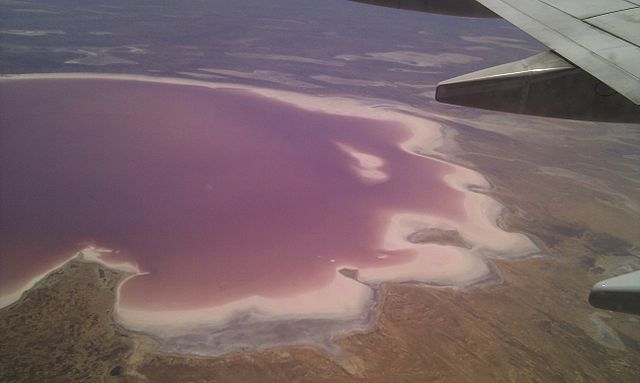Lake Eyre, officially known as Kati Thanda–Lake Eyre, is an endorheic lake in the east-central part of the Far North region of South Australia, some 700 km (435 mi) north of Adelaide. The shallow lake is the depocentre of the vast endorheic Lake Eyre basin, and contains the lowest natural point in Australia, at approximately 15 m (49 ft) below sea level. On the rare occasions that it fills completely, it is the largest lake in Australia, covering an area of up to 9,500 km2 (3,668 sq mi). When the lake is full, it has the same salinity as seawater, but becomes hypersaline as the lake dries up and the water evaporates.
Composite Landsat 7 satellite image in 1999 using shortwave infrared, near-infrared, and blue wavelengths
Kati Thanda–Lake Eyre salt crust
Kati Thanda–Lake Eyre seen from an aircraft, showing pink colouration from algae
Kati Thanda–Lake Eyre South
An endorheic lake is a collection of water within an endorheic basin, or sink, with no evident outlet. Endorheic lakes are generally saline as a result of being unable to get rid of solutes left in the lake by evaporation. These lakes can be used as indicators of anthropogenic change, such as irrigation or climate change, in the areas surrounding them. Lakes with subsurface drainage are considered cryptorheic.
Death Valley, Spring 2005: ephemeral Lake Badwater in the flooded Badwater Basin
Example of anthropogenic effects on the Aral Sea
The Great Salt Lake (an endorheic lake) in Utah, taken from the ISS.







